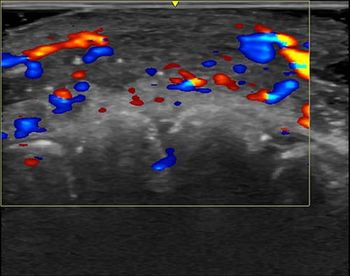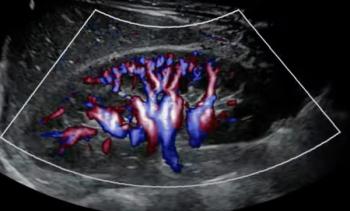
Proponents of kyphoplasty, vertebroplasty square off
After years of backbiting, practitioners of kyphoplasty and vertebroplasty have finally found an issue upon which they can agree. They need a randomized controlled clinical trial.
After years of backbiting, practitioners of kyphoplasty and vertebroplasty have finally found an issue upon which they can agree. They need a randomized controlled clinical trial.
Despite heated exchanges between the two camps and occasional finger-pointing for alleged clinical flops, scientific evidence is lacking that would justify using one technique instead of the other to repair vertebral fractures, said Dr. Avery J. Evans, an interventional neuroradiologist at the University of Virginia Health System. He spoke at a special focus session and panel discussion at the RSNA meeting.
Until recently, only scant clinical literature existed that documented the ability of either technique to treat kyphosis and other vertebral compression fracture symptoms. Promises of therapeutic benefit or height restoration are meaningless without kyphosis reduction, Evans said.
Interventionalists recognize the shortcomings of each technique. For example, patients with tumors who undergo vertebroplasty have higher complication rates. Cement leakages also appear more frequently after this procedure. But physicians cannot establish the success or complication rate of either technique without a randomized controlled trial, he said.
Most available references for these procedures come from in vitro biomechanical data, incidental or anecdotal reports, or retrospective nonrandomized data. Some evidence suggests that increased vertebral pressure following these interventions can cause new vertebral fractures.
While the overall risks of each technique seem similar, the multiple factors influencing success or failure have not been properly addressed, said panelist Dr. David F. Kallmes, an interventional neuroradiologist at the Mayo Clinic in Rochester, MN.
"Until these issues are clearly resolved, we need to have an honest discussion with patients about these procedures," he said. "We also need to make sure we do our best to manage the disease, not just the symptoms. We definitely need a trial."
Several groups in the U.S. and Canada have created protocols for prospective studies. The first multicenter randomized controlled trial with a significant patient population is expected to be announced next year.
For more online information, visit Diagnostic Imaging's
Newsletter
Stay at the forefront of radiology with the Diagnostic Imaging newsletter, delivering the latest news, clinical insights, and imaging advancements for today’s radiologists.




























